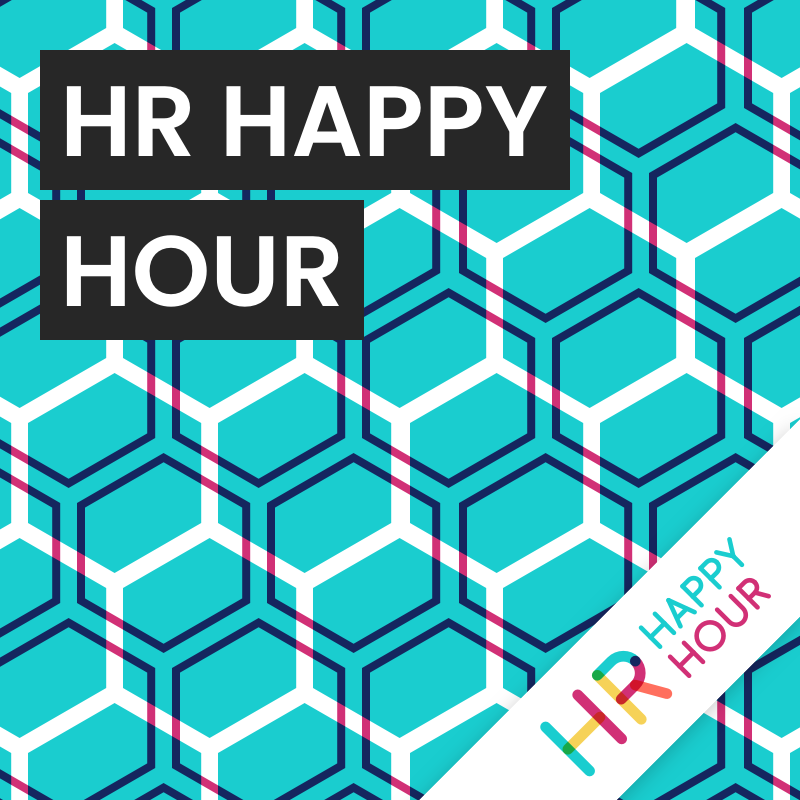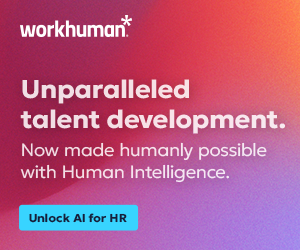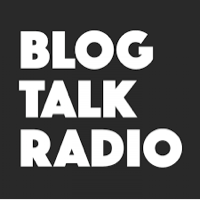Sustaining Company Culture: Insights from the Latest Culture Amp Research
Hosted by

Steve Boese
Co-Founder and Chief Data Officer of H3 HR Advisors and Program Chair, HR Technology Conference

Trish Steed
Co- Founder and Chief Strategy Officer, H3 HR Advisors
About this episode
HR Happy Hour Episode 519 – Sustaining Company Culture: Insights from the Latest Culture Amp Research
Hosts: Trish Steed, Steve Boese
Guest: Fresia Jackson, Lead Research People Scientist at Culture Amp
This week, we spoke with Fresia Jackson from Culture Amp about their latest report on top trends throughout the employee lifecycle.
– How the growth of a company impacts culture and engagement
– Changes organziations have seen in company culture
– Busting generational myths in the workplace
– Analysis of engagement survey results
– Importance of flexibility over how and when employees work
Read the full report here
Thank you Fresia, for joining the show today! Remember to subscribe to the HR Happy Hour wherever you get your podcasts.
Transcript follows:
Steve 0:24
Welcome to the HR Happy Hour Show with Trish and Steve. Today Trish, we are going to be talking about culture. More specifically, a new report that’s come out from our friends at Culture Amp called the Culture Crunch Report, top trends through the employee lifecycle. And even more importantly than the employee lifecycle also like what happens to culture as companies grow, and which I always thought is a super fascinating topic. And we’re going to dive into that in a lot of detail on the show today, which is going to be awesome. I’m excited about that Trish. I’m also excited about something else today as we record this, as we speak. What the Oscar nominations will be that happened this morning? I don’t want to get into that because it was kind of a weird year for movies with your to the pandemic, etc. But since it’s an Oscars day today, I have a movie related question Trish, and here it is. Okay. What movie do you watch over and over and over again? You never get tired of it.
Trish 1:29
My tried and true. I could watch it probably a million times is Tombstone. Okay, no matter when it’s on, it could come on at any point if I’m flipping channels, and it’s on I’m stopping. I love Tombstone. I don’t even know why. But then the latest one, I think is called The Favorite. The Favorite with Olivia Coleman. And she’s actually up for an Oscar nomination this year for the Last Daughter. I tried to watch and I’m not loving. So what I did was I went back and watched The Favorite, but it’s her and Emma Stone and it’s wonderful. I don’t know. We’ll have to ask our guest if she’s seen The Favorite, but it is wonderful. It’s so funny. So good. What about you? What’s your what’s your go to Steve?
Steve 2:15
Yeah, I got a bunch of them. Twister we’ve talked about that many times on this show. A Few Good Men.
Trish 2:25
Okay, sure.
Steve 2:26
Come on. I want the truth. You can’t handle the truth!
Trish 2:32
You know, I know you love Tom Cruise. And I’m not a Tom Cruise fan. But I did watch that movie finally. And I did love it.
Steve 2:39
Great movie and then you win and a fun one for me is The Hangover, the original one. Oh, eminently rewatchable.
Trish 2:48
One of the best, all right you’ll have to ask our guest.
Steve 2:52
I don’t know if she’s a movie person or not. We didn’t prep her she did not hear the question in advance much like you didn’t Trish, but let me welcome her to the show. We’re very excited to welcome our special guest Fresia Jackson. She is the lead research people scientist at Culture Amp. Fresia is passionate about bringing data to people problems, which she has advocated for in diverse settings from government agencies to startups and ultimately led her to a master’s in psychology at Culture Amp, a people and culture platform. She spent three years consulting with companies like Airbnb and Lyft to align their employee feedback strategy to their organizational objectives. Now as the lead research people, scientists, she analyzes the data from all of Culture Amps customers, to bust myths, find common patterns and share those insights with the world. Fresia, welcome to the HR Happy Hour Show. How are you?
Fresia Jackson 3:44
I’m good. Thanks for having me.
Steve 3:46
Good to see you. As we as typical in our practice here Fresia, we invite our guests to chime in on a question of the day. Do you have a movie that you’re like, Oh, I watch this over and over again.
Fresia Jackson 3:58
I love the aspect of a question of the day. This is very fun. I love the Oscars. My husband and I actually every year kind of do our own draft of saying we think this movie is gonna win. He’s a little bit better than I am, honestly, but I have seen The Favorite and I don’t understand how is Olivia Coleman so good at playing royalty. She’s just incredible. I think my movie that I watch over and over although honestly I’m a bit more of a novelty person. So I always watch new movies but back in the VHS days, you know when you only had a few movies you could pull out, Romy and Michele’s High School Reunion was one of my favorites, and I actually watched it two weeks ago and it’s still good.
Trish 4:54
Oh my god. Okay, I’m glad you mentioned that. I haven’t seen it probably in at least 10 years, but that was an old favorite. For sure. Oh, my goodness. Well, that’s good. I’m actually glad to hear you’re an Oscar person that you and your husband do that. Steve and I have been doing that for years, I can’t even count how many years. And we always try and guess and so I wound up when they announced them today, I guess, eight of the time. But I don’t know if you’ve seen any of them yet. I’d love to just hear that before we dig in on culture. But like, I just feel like it’s a it’s been a down year. I don’t know, I’m not excited about many of them this year.
Fresia Jackson 5:28
That’s how I feel too. Actually yesterday, we were scrolling through, you know, on our Google TV, it’s like, here’s all the Oscar buzz. And I wasn’t excited about watching any of them, which made me a little sad.
Trish 5:42
I know. Yeah. Well, I guess we’ll have we’ll follow up with you afterwards. Let’s do a catch up, maybe we can have you on our Work Break and or new Off the Clock show. I love it. We’ll talk Oscars and see, see what shakes out. But anyway, thank you for coming on to talk about culture today. And I know, you know, there are a lot of of things written about culture, a lot of you know, different podcasts about culture shows about culture. And I feel like it’s saying a lot of the same thing. And what I want to at least preface this with is that this report, I feel like digs in in a really different way. That’s actionable. So I’m really excited to have you on the show today to talk about some things that, you know, leaders can can really be doing and thinking about that are going to make a true impact on their culture. So with that, I wanted to kind of start with, you know, as companies are going through many changes right now, a lot of them are actually experiencing growth. This even though we’re in a pandemic, there’s been a lot of companies that are just growing so fast, right? We can’t even keep me on things. So can you talk a little bit about, you know, how the growth of a company impacts culture and engagement, you know, at a very high level, and then maybe we’ll go deeper with that.
Fresia Jackson 6:59
Yeah, that was really the intention behind the Culture Crunch Report, we know that companies are going through so many changes, especially now. And our customers are constantly asking us the question like, is this normal? And if they’re proactive, then they’re asking us like, what should we expect? And we had our own anecdotal answers to that. But we really wanted to crunch the data and see what is the quantitative answer that we can provide looking across 4000 companies kind of what are the patterns and trends that we see? And so we looked at several different companies stages, funding stage growth trajectory and company size. And when it comes to growth trajectory, so as you mentioned, you know, there were a lot of companies that grew, there were a lot of companies that shrank during COVID. So when we kind of how we defined company growth was based off of headcount growth. And when we looked at that, we found that there were about 35% of companies that grew and about 25% That shrank, and first, what we found was, perhaps unsurprisingly, grow, employees at growing companies are much more positive. So they felt like they had more career opportunities. And they felt more confident in the leaders, they felt more motivated, and they were less likely to be looking for another job. So kind of in a nutshell, when you’re growing, you’re grieving.
Trish 8:38
You know that, that’s interesting. It reminds me I had a conversation, actually, with a very high level executive the other day, and he was looking at me has been at the same place for quite a while. And it’s not that anything’s wrong. But he was sort of thinking like, is this a time where I should be exploring some of the opportunities coming. And one of the opportunities was at a very high growth kind of company. The other one was more of a fine company, but it’s more stagnant company, I would say. And he was really on the fence. And I said, who does not want to go join a winning team? Like, I don’t know about you, but I feel like, you know, so there’s some, there’s just some intuitive truth to that as well. So I’m glad to see that, you know, the data really bears that out. Because I think it’s really hard when when people are out there making these decisions, that that could be a very big factor right in them deciding where to go?
Fresia Jackson 9:29
Definitely. But it’s not all rosy at growing companies. So that’s another thing that we found, which was of all the topics that we looked at which were over 70 Questions looking at engagement survey responses, as well as we have a DEI survey and the responses there. We found that there were only three things where employees that stable companies were actually more positive than those at growing company. So you can kind of consider these the pitfalls of growth. And so maybe your friend is concerned about these pitfalls. Okay, I know that you already know what the pitfalls are, but what would you have expected them to be?
Trish 10:15
We’ll let Steve answer.
Steve 10:16
Yeah. Well, I think that’s that sort of lead was leading me into the next question I was going to ask where like, if you’re sitting in a growing company, and things are good, and revenues are going up, headcount growing, you’re being you’re successful, et cetera, et cetera, everything kind of feels good, right? A little bit. Back like and so we kind of wanted to get out next was, well, what are the things to look out for? As you said, the pitfalls, I would suspect that at least least one of them would be just, you start to begin to feel a little disconnected from, from the other folks that you’re working with maybe? And then maybe also, I think this was in the data to me, but you start to feel not so confident or positive about the leadership? And solution, thanks to those are two things I think I remember seeing, but maybe, maybe you could tell me if I’m wrong or right about that.
Fresia Jackson 11:05
Yeah, those are good guesses. So those are things we saw when it came to company size, right? Actually, growth itself did not affect those things. So what we found is the pitfalls of growth were role clarity, so not being sure what success looks like, in your role, right, because it’s likely changing rapidly. And it’s a little bit more difficult for employees to kind of see what what they should be doing to make an impact. And then enablement, so not feeling like the information they needed was available or up to date, and then work life balance and not being able to arrange time out from work when they need to. So especially when there’s a lot to do all hands on deck, it’s really hard to find that that time to recharge.
Trish 11:56
Yeah, I can see that would definitely be true. I wonder too, if do you see or maybe through clients who have been sort of in high growth mode? It seems like even when things do slow down in the companies where I’ve been a part of where there was that sort of, you know, just feverish, almost, you know, work, rigorous routine that you’re going through, even when things finally stabilized, it’s hard to get out of that mode to which I think would culture as well?
Fresia Jackson 12:23
Yeah, definitely. I think once kind of those practices that pace has been put into place, it’s it’s difficult to step away from that, like, actually, we don’t need to be moving at this pace anymore, we can slow things down. And I think that brings up a good point around the types of people that are drawn to growing companies are not necessarily the same as the types of people that are drawn to stable companies, right? Like all the things I just described around role clarity enablement, you have to be really comfortable with ambiguity. And be excited by that. Whereas if you’re looking for that, that stability, you’re not going to find that in a growing company. And I think that so often, companies want to really highlight those positives, of which there are many, when a company is growing, right? They want to say the team is growing, and there’s going to be so many career opportunities, but they don’t always talk about that flip side of as the team grows, that means roles are going to be shifting around, you’re not really going to be sure for a little bit how you can kind of best make an impact.
Trish 13:30
Yeah, it’s, you know, it strikes me as I was just, you know, I have kids that are getting ready to go to college, and we’re talking a lot about jobs and how you find the perfect job, if that exists. It’s interesting, I don’t think I’ve really thought about that as I was getting jobs and interviewing. But it makes sense that you should, because if you’re someone like I’m someone who doesn’t tend to enjoy structure, I like more ambiguity. I like not having a role definition, because I want to change constantly. So I have definitely joined companies where it was very structured and prescribed. And, and then I would wonder, like, why am I not feeling like I’m excelling here? Right? So maybe that’s I mean, it’s a good point that you bring up I think that’s it’s something could be very helpful as you’re thinking about the company you want to work with, or maybe where you are right now, if you’re feeling like you’re not part of the culture of that company. That could be a very big indicator, I would imagine.
Fresia Jackson 14:26
Yeah. Well, I could have guessed that based on your response to who wouldn’t want to grow like throwing a rocket ship?
Trish 14:33
Why don’t we? Are we crazy or not? I know. Anyway, okay.
Steve 14:41
If you looked at the data, and I think prior to we turned the recording on, you mentioned that Culture Amp had published this type of a report a number of years ago. And so I wonder if two questions really one is where there really substantial differences maybe in what you found about scaling culture. So in this example that we’re talking about, say a few years ago until now, and then I guess the follow up would be if there is a follow up, like, has pandemic and just work kind of forced work from home for lots and lots of organizations kind of changed the way we think about culture. And we think about scaling culture in the in these organizations that perhaps were successful, and were growing. Is it different now than it was five, six years ago?
Fresia Jackson 15:26
Yeah, great question. So we did a culture crunch report in 2016. Right when I joined Culture Amp, and at that time, we had 187 companies that we were looking at, and we were only looking at funding stage. Now we have 4000 companies that we’re looking at, we have just 197 in the series C bucket last time. So we’ve really been on our own little rocket ship, and have been able to kind of make the switch of doing a lot more in depth primary research. So that was only funding stage. And now I feel like this report, we’re looking at so much more in information when it comes to growth trajectory and company size. And I think those insights might be a little bit more interesting. Even I mean, I love all my children, my research children equally, but we have seen differences. But you know, I don’t know if if those differences are because of the difference in sample just we can be so much more confident in the results now.
Steve 16:37
Yeah, yeah.
Trish 16:38
It seems like there isn’t really much of a comparison. I mean, if you could have a crystal ball a little bit, though, to when you think about, you know, just a relatively short time that you’ve been there at Culture Amp, and you’ve seen that kind of growth in the organization you’re working with and with the number of clients that you have, does it does it lead you down a path in your mind, maybe where the team is going to go in terms of you know, your next Crunch Report, right, that you’re going to do in whether that’s a year or two years, or three years or whatnot? What are you thinking are sort of the most important factors of where growth and culture and engagement kind of all go in the next couple of years? Where should people be looking?
Fresia Jackson 17:25
That’s such a good question. I feel like two different questions, because what I’m most interested in, in researching is not always where I think it’s going in the next few years. But actually, right now, we’re doing a research idea gathering process within culture, and from campers, which is what we call Culture Amp employees. So I’m getting tons of ideas right now, the ones that I’m most excited about first is busting generational myths around generations in the workplace, because I hear those so often, and especially with Gen Z, entering the workforce, it’s just becoming, you know, every 10 years, we hear something, and I think we have so much data when it comes to age, and what’s driving employee engagement for each of those groups, you know, how they’re seeing their relationship to the company, that we could really do some interesting things there. But I can’t promise anything, if that’s gonna happen.
Trish 18:23
That no, we’re not gonna, we will hold you to it. But I think you’re right, it’s just we’ve got you know, that a very new different generation coming in, as well as many of us who have been working from home and hybrid work and all these different things are having very different opinions of work ourselves. So I think it’s going to be a few, a few interesting years of, of new and interesting data.
Steve 18:45
We talked a little bit about kind of the type of person who might feel more comfortable and more charged up, as I say, a growing company versus maybe a stable company versus old company, that’s just very traditional, maybe, chain, and that that makes a lot of sense. And I probably worked at a couple of different companies along the way that I’ve been in each one of those kinds of situations and probably felt better at one versus the other. The other one of the other kind of areas the report dives into, it’s not it’s a subtle difference, but a difference in not so it’s not about growing or trajectory of a company, but it’s actually just as company size, in general, right? So small midsize to large enterprise, and what the relationships are between company culture and company size, and sort of what successful if that’s the right even term to use? I’ll use it for lack of a better one, with successful companies that each kind of company size or each stage. A couple of, I don’t know, the headline kind of findings for say, What small companies are doing well, and maybe not so well. And maybe what large companies tend to do well, and maybe not so well, because I think that’s pretty instructive for folks who are listening, who might be wondering themselves, okay, I’m in a large company but, you know, blah, blah, blah. Yeah, yeah, he thinks you can tease out from the report findings.
Fresia Jackson 20:07
Yeah. And every company is intersectional, just like humans, right. So you can be a large company that’s stable or growing, you can be a small company that’s shrinking. So each of these, you kind of have to look at them together to get a full picture for a company. But if you’re growing, you know, at some point, you’re going to be a large company. And what we found was that generally scores so when I say scores, I mean, the percentage of people that are agreeing to positively worded questions in our engagement survey, generally, those decline as a company gets larger. And we actually see the largest declines in perceptions of leadership and connection to the company, as well as autonomy and work flexibility. So being able to take time off from work. So it’s, it’s definitely that connection aspect, like you were alluding to.
Steve 21:09
But yeah, sort of company size versus growth pattern. Right?
Fresia Jackson 21:14
Yeah. Because we actually ask for different questions around leadership, we ask if employees have confidence in the leaders, if they feel motivated by the leaders vision, if they feel like the leaders demonstrate that people are important to the company’s success. And then finally, if the leaders keep people informed about what’s happening, right, so you can kind of separate those into the first two were kind of around emotional connection, right? Like, are employees feeling motivated? And do they feel confident in the leaders? And then the final two, were more about behaviors that the leaders are demonstrating? Right? Are they keeping people informed? And are they really demonstrating that that recognition of employees, and we see the declines are actually much larger in those emotional connection ones. So the leaders are generally probably doing the same things, but as the layers of the company, the levels just get, you know, larger and larger between most employees and leaders, they aren’t able to connect as easily.
Trish 22:28
I just want to say it’s interesting, too, that the keeping people informed, it really ties back to some of the pitfalls of you know, being in a growth organization, right? Was that, you know, enablement, right? You said, the lack of information, lack of understanding kind of where things are going. So it’s pretty important, regardless of the size of company are in.
Fresia Jackson 22:47
Definitely. And that’s actually a very good point. So we do something called driver analysis. So when you get your engagement survey results, kind of the first thing you probably look at is where you’re scoring high and where you’re scoring low. But that’s really only one piece of the puzzle. The next is knowing what is actually important to employees and what drives engagement. And you find that out by correlating their response on one topic to another topic. And if they’re highly correlated, that means they’re, they’re responding similarly to both. So if the employee agrees that they have confidence in the leaders, and all of them that agreed were also engaged, that would be a very high driver. And so we looked at how drivers differed by company size. So what matters to employees by company size? And we found that question specifically, around the leaders keep people informed, it jumps up like crazy. It is a much higher driver in companies, where there are more than 5000 employees. Really, it goes from like, the 40th question out of 72 in the the top 10.
Steve 24:08
You know, I get why that makes sense. But I also kind of wonder, like, why, with all the modern ways and the technology that organizations have access to to facilitate something. Simplify too much, but something seemingly simple as Yeah, keeping employees informed of, you know, business decisions, strategy, important initiatives that the organization might be taking, like, I feel like it shouldn’t be so hard for you. Is it? Is it Do you think it’s because it’s not just, oh, I sent an all employees email every Friday, is it people want more? I don’t know, personalized or personnel types of communication, which is just very bad is very, very difficult to scale. Like, I’m just wondering why. I don’t know maybe that’s beyond the scope of the research like Why is that a problem?
Fresia Jackson 25:02
It’s beyond the scope of the research, but I have my own opinions. I think it might be the difficulty in reducing noise. As you become a larger company, like you assume that you’re communicating really well. But everything is being communicated. So then people don’t feel like they’re informed because they might be missing it in the midst of the whole their gigantic inbox, or all of the Slack channels they’re stuck in.
Trish 25:30
Yeah, I think the other thing too, is if you are in a company of that size, really of any size, but especially that size, you need to think about the way that people want to consume information. And so we’re also used to, we might have grown up where email is the way, right, I know, I’m not big on reading every single word of an email from the CEO, right, I might gloss over it and miss things. So I think it’s simplify your message, but then put that out in many different ways, right? It might be a video and an email and whatever, right two or three different ways, something that’s in print that’s sent to the employees, or maybe have them opt in to how they receive messages, right, so that they’re not getting it in a way that’s not comfortable or consumable by them. But I it’s interesting, though, that that’s one of the higher drivers kind of thinking back just to culture and engagement and, and leadership. I would say, too, I don’t know that we train our leaders to think about these things, right. So maybe if I’m a leader, at a smaller company, and I’ve taken a role at a larger company, I’m not necessarily changing the way I lead, I’m not training myself on what are the drivers that are going to really, truly drive engagement and growth and success for me? Do you get clients that are thinking about those things? Or is that still something that’s kind of, I guess, randomly applied?
Fresia Jackson 26:57
Yeah, I think usually, when clients come to us, there’s a reason right there. There’s something that they they have an inkling of what’s going on. And they want to be able to put data behind it and say, Okay, we know this is going on, because employees told us, but usually, they’re more interested in that, okay, these are the low scores, and they’re not as interested in what’s actually driving engagement. So we kind of have to take them on that journey of changing their thought process to it’s not just whatever’s lowest, but it’s actually you know, where you have that opportunity for improvement is really going to move the needle and be important to your employees. And that differs by company, though I am talking about what’s the average, but I certainly see companies where they have high drivers that we don’t see in other companies. So you have to ask people, and then you have to do the analysis.
Trish 27:57
You know, as you said that I wrote down. So many times in my career, right or wrong. It’s like people are like, you’d get some sort of a survey back, right? And it’s like, we’re going to go after the low hanging fruit. I’m putting that in the air quotes, actually. Right. So what you’re saying is, which is necessarily the right, right? If you’re just going after the low hanging fruit, we’re not actually going after the most impactful things that are coming up, that might transform our business. So I will say I think that’s what’s really interesting about culture amp. And what you’re doing is that you’re taking that information and all of that data you collect, and then teaching your clients how to make it actionable around those impactful data points versus the low hanging fruit. So I’m glad you’re on there.
Fresia Jackson 28:46
There’s always some like red herrings. So compensation, people are never happy with their compensation. It’s always a low scoring question. And it’s very rarely a high driver of engagement. Sometimes it is, but very rarely is it It’s usually more Leadership and Learning and Development is what we see being the key drivers.
Steve 29:10
For sure. One more I wanted to bring up because I saw it in the report. And I saw it in my notes taken prior to the show, which was how employees feel about the importance of flexibilities or autonomy or maybe a little more control over their, how they do their work, when they work maybe even where they do their work and this like and how that why that matters. And then also does it is it different or do you have does the research show that it’s it’s different between, say companies of different sizes?
Fresia Jackson 29:47
Yeah, that is such an interesting one. So we found that as a company gets larger, not necessarily as it grows, but as a company increases in size autonomy decreases. So feeling like employees are able to control the way that they do the work and the decisions that they’re they’re making around their work. But when we looked at drivers, it becomes a more important driver of employee engagement as a company gets larger. So, I mean, this is all my hypothesis, but I would guess it’s because, you know, at a small company, you’re expecting to have autonomy, and you do. So it’s not really making you feel more engaged. Whereas at a larger company, if they’re able to provide that environment that still allows for autonomy, employees are more engaged. And it seems like those companies that can provide a small company experience in a large company are going to be better off.
Steve 30:52
Yeah. And that’s one of the great takeaways, and one of the great findings from a report like this, there’s lots more in here. But I wanted to bring that one up, too, because I thought it struck out to me a little bit as really an actionable one, if you’re a business leader, or an HR leader, or a larger company, who might find themselves struggling a little bit to say, well, what can we do to kind of have that that small company feel if you will, right? Because it’s, when you’re starting at a small company, almost no matter what the role is, you’re brought in, and you’re told, okay, figure out how to do product development, engineering, or marketing or human resources, just go figure it out, right, set it all up, figure out what we should be doing and how we should be doing it. At a large company, for the most part, you’re you’re brought in to then do stuff someone else has already figured out.
Fresia Jackson 31:38
Execute on a framework that’s already been done.
Steve 31:42
I think it’s important to say, well, over time, right, what can we do to provide employees more flexibility, more autonomy, and those things that, that the smaller companies tend to do? Well, and sometimes because they have to, I guess, admittedly.
Fresia Jackson 31:58
Well, and what’s interesting is that it also works on the flip side, so smaller companies, having effective systems and processes was a higher driver in smaller companies than in larger companies. And generally, larger companies have more systems and processes. So it works both ways, I think, to be able to provide those pros that you might expect from a different sized company.
Steve 32:23
Yeah, it’s not a one, it’s a complex thing, right. And you’ve got to find that right balance for your organization, because even within small company, large company, or growing company, kind of flat company, not all companies are the same, right? They’re operating in their own, in their own unique culture, their own unique part of the world. Maybe that that hasn’t been to this as well. But I think there’s some great, there’s some great learning some great takeaways in this report. i i definitely recommend it. It’s long, but not so long that you can’t read it. How’s that?
Fresia Jackson 32:58
It’s very meaty. It’s about 40 pages of meat.
Trish 33:03
You know, what I want to say, though, about this, this is, having been a practitioner, here’s how I would use this report, right? I would, I’m someone that prints it off, right? I’m gonna hold it, I like I have it printed off. And I’ll mark in color in color, right? No, but what I like is that it’s sectioned off in ways that that really makes sense. And so you know, for example, I’ve got growth trajectories section right in front of me, and you’ve got it broken out out into the trends, the spotlights and the takeaways. And so I think what I would do is sort of, you know, skim it to begin with, to sort of get a feel for what is contained within, but then, as I would be working through 2022, I’d be pulling that copy out again, and again, as I needed it to dive in, maybe on that, or in, you know, maybe I really want to look at company size, right? So I wouldn’t necessarily say consume it with my team, in one sitting. Yeah, but this could be something that could be used as a training guide for their HR teams, for example, or, you know, working with their company stakeholders across the company, maybe and really just dive in on little portions of it throughout the year, so that it’s actually consumable, and then you can actually use it to make an impact in your organization.
Fresia Jackson 34:19
Definitely, I love that. Yeah, it’s like a little field guide, just to open it to the part that’s relevant for what’s going on in your organization.
Steve 34:27
It could be kind of, it could be what you carry into that meeting with that, that executive type person who maybe is falling down a little bit on instilling confidence and, and being motivating and making, you know, connecting with people on a, you know, a meaningful level because if that’s hard to do, but it’s hard to sometimes it’s hard to convince those people they need to change their behaviors, right? Because they’re not used to being told that So, alright, this is great stuff. The it’s the report. It’s the Culture Crunch Report top trends, the employee lifecycle, you can find it at the Culture Amp. website we’ll we’ll link to the actual page on the culture amp website where folks can find this report. Highly recommend it, download it, share it with your teams, share it with your leadership. Really, really, really great stuff. Fresia, thank you so much for joining us today. I hope you had fun with this.
Fresia Jackson 35:17
Yeah, this was so much fun. It’s like just talking to other people nerds.
Trish 35:22
I have to tell you, when it said you’re passionate about bringing data to people problems, I’m like, oh, gotta love it. This is gonna be a great conversation. That’s like my whole life.
Steve 35:31
My unrelated question before we end and I’ll ask this appreciate so I don’t remember Romy and Michele movie all that well I just remember the base basic plot of it is can we we do a series on the podcast every so often called workplace movie hall of fame, where we we rewatch an old movie, and then we sort of break down all the work and workplace themes and ideas in that one could we do that one is there in there, or is it more just high school shenanigans?
Fresia Jackson 36:03
There isn’t much work things in there. They more pretend to be impressive in their work life.
Trish 36:11
She’s created post it notes. Yes.
Fresia Jackson 36:16
They go to a diner and ask if they have a Business Women’s lunch special.
Steve 36:21
I don’t know if we can do 30 minutes on that, but that’s fine.
Fresia Jackson 36:25
It’s perhaps status around different jobs.
Steve 36:31
I’ll have to rewatch that and we’ll have to see. Otherwise, we’ll have to find another one maybe Trish because we should do one.
Fresia Jackson 36:36
Have you already done Office Space?
Steve 36:38
You know, we haven’t and so we try to do ones that are not exactly right on the nose. Yeah. So like, my favorite one is probably Mr. Mom, is a really good one. That’s a good one. And we did Flashdance a number of years ago.Flashdance is awful by the way how was that workplaces?
Fresia Jackson 37:03
I used to have it on VHS. Flashdance
Trish 37:07
I don’t think I realized at the time how bad that was towards women and certainly watching it now. My daughter was like, Okay, I watched Flashdance. And I’m like, No, don’t even do that. Don’t even do that.
Steve 37:18
Every female character in that movie gets harassed in her workplace. And it’s not the main character. It’s all her friends to it’s awful. All of them. Yeah. Well, we’ll have to schedule another workplace movie hall of fame. Maybe we’ll invite you back for that as our special guests.
Fresia Jackson 37:33
I would love to.
Steve 37:37
All right. Thank you so much Fresia Jackson from Culture Amp the report is the Culture Crunch Report, top trends through the employee life cycle. Download it at cultureamp.com. Thank you so much for being here, Fresia. Great to see you.
Fresia Jackson 37:50
Lovely to meet you both, excited to be back.
Steve 37:53
Alright, Trish, thanks so much. Great show good stuff. We will charge on triumphantly as we head into Oscar season and work this movie hall of fame season. So thank you. Alright, that’s it. Thank you, everybody for listening to the Happy Hour Show. For our guest Fresia Jackson, for Trish Steed, my name is Steve Boese. We will see you next time.
Transcribed by https://otter.ai
Talk to us
If you want to know more about any aspect of HR Happy Hour Media Network, or if you want to find out more about a show topic, then get in touch.









